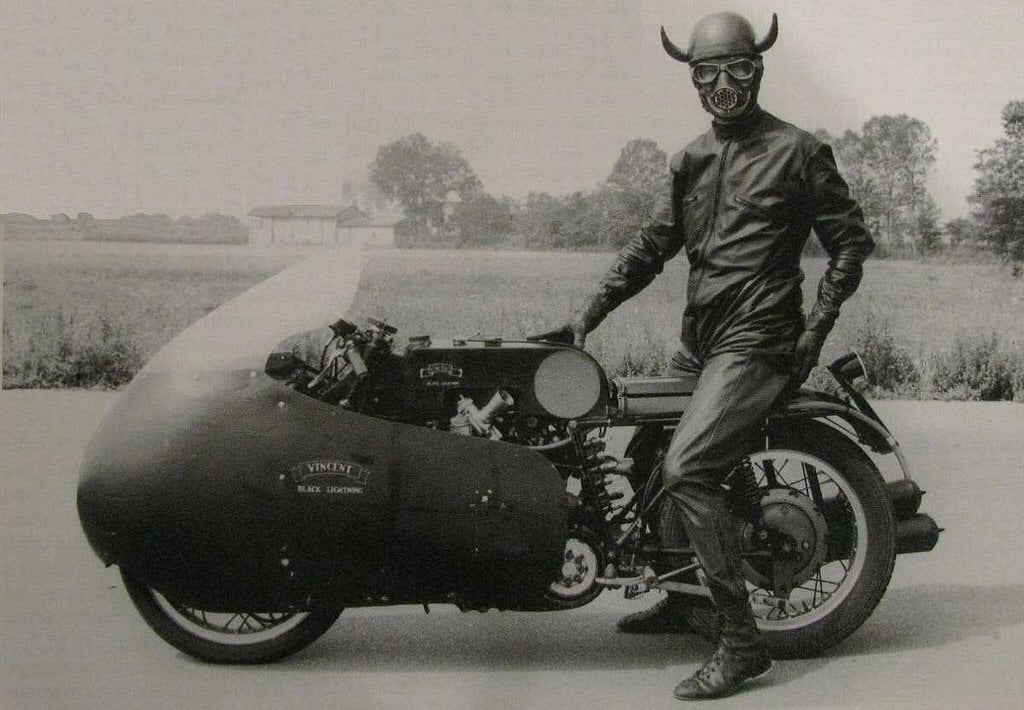 |
| Motorcycle stuntman John "Crash" Brown in action. |
1. There are many more cars and trucks than motorcycles on the road and some drivers don’t “recognize” motorcyclists. They ignore them, usually unintentionally. Look for motorcycles, especially when checking traffic at an intersection.
2. A motorcyclist may look farther away than he or she is in actuality. It may also be difficult to judge a motorcycle’s speed. When checking traffic to turn at an intersection or into (or out of) a driveway, estimate that a motorcycle is closer than it looks.
3. A motorcycle can be easily hidden in a car’s blind spots or masked by objects or backgrounds outside the car. Thoroughly check traffic, whether you’re changing lanes or turning at intersections.
4. A motorcycle may seem to be moving faster than it really is. Again, don’t immediately rely on your perceptions.
5. Motorcyclists sometimes slow down by downshifting or merely rolling off the throttle, thus not activating the brake light. Don’t tailgate motorcyclists. At intersections, anticipate that motorcyclists may slow down without any visual warning.
6. Turn signals on a motorcycle are not often automatically self-canceling. Some riders, (especially beginners) sometimes forget to turn them off. Try to determine whether a motorcycle’s turn signal is for real. And if you’re driving a car, remember to use your turn signals too. They’re a great communication tool for riders and drivers when used properly. [In the words of the bumper sticker “Forget about world peace, visualize using your turn signals!"-IC]
7. Motorcyclists often adjust position within a lane to be seen more easily, to avoid road debris, and deal with passing vehicles and wind. Understand that motorcyclists often adjust lane position for a purpose, and it’s not an invitation for a car to share the lane with them.
8. Maneuverability can be one advantage for a motorcycle, but don’t expect that motorcyclist can always steer or swerve out of harm’s way. Please leave motorcyclists room on the road, wherever they are around you.
9. Stopping distance for motorcycles can be nearly the same or better than that of cars. But wet or slippery pavement can put motorcyclists at a disadvantage. Don’t violate a motorcyclist’s right of way, especially in bad conditions.
10. Don’t think of it as a motorcycle, a machine: Think of the rider; the person on board is someone’s son, daughter, spouse or parent. Unlike other motorists, protected by doors, roofs and airbags, motorcyclists have only their safety gear and are at greater risk from distracted drivers.
-Motorcycle Safety Foundation
And Hell for Leather Magazine’s addition:
11. Put the fucking cell phone down and pay attention to the road. You’re operating a goddamn 2-ton murder machine, take some responsibility for your own actions for Christ’s sake.
-Hell for Leather Magazine
 |
| Always wear gear that makes you stand out, like this Vincent rider. |
As motorcyclists, we have a responsibility to ride defensively, wear proper protective gear (protection can mean getting you noticed as well as armor and leather), and do everything we can to anticipate trouble. Expect everyone to do something stupid and plan accordingly, then you’ll be ready the one time someone does. For example, whenever I see a car at a stop sign I assume they’re going to pull out in front of me, and plan a course of evasive action. It's only happened once, but when it did I was ready, and avoided a serious collision, because the decision was already made, so I didn’t have to think before acting. Think several seconds ahead and several hundred feet down the road at all times. You’ll be a better, safer, more aware rider or driver for it, and you never know-it might save a life!
No comments:
Post a Comment